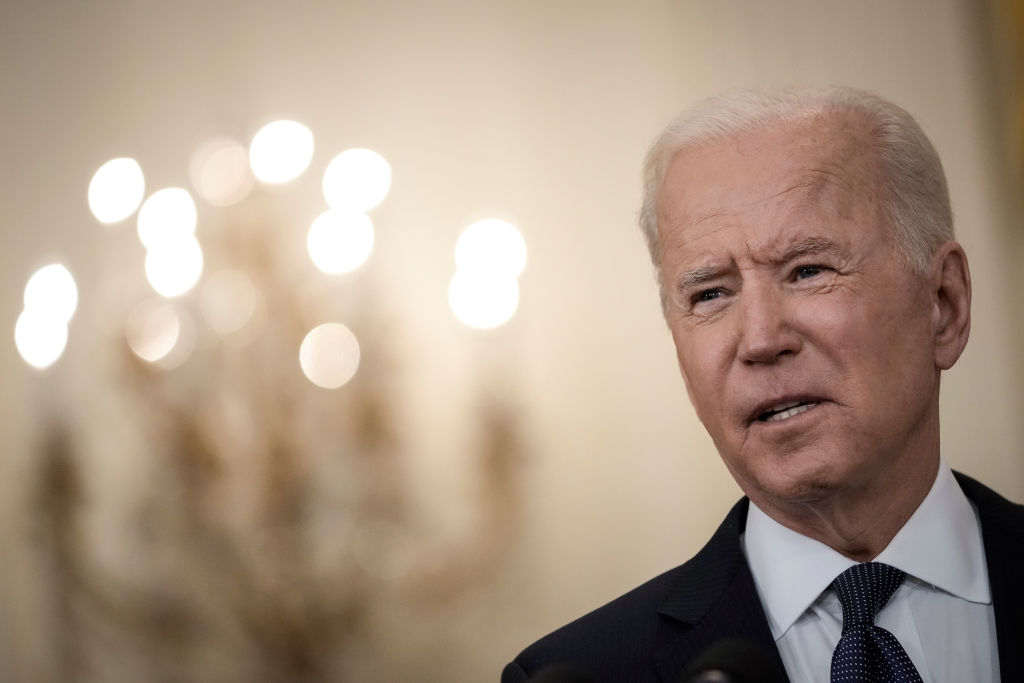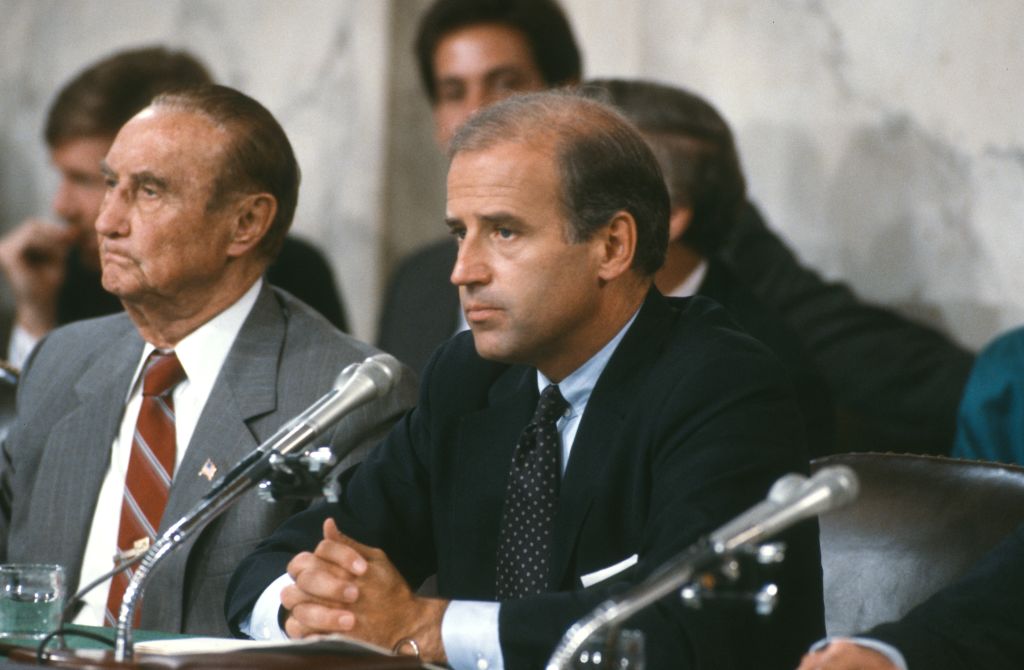
Few politicians understand the federal judiciary like President Joe Biden does. As a young Senator, he served in top roles on the Judiciary Committee for over 15 years, overseeing the confirmation of hundreds of district and circuit court judges and eight Supreme Court justices.
Which means now as President, he knows the scope of the challenge and opportunity before him to nominate federal judges. “He feels this personally,” a White House lawyer with knowledge of the nominations process says. “His commitment to these issues really goes back decades.”
Biden has over 100 federal judicial vacancies to fill, and he has already announced 14 judicial nominees, including three to circuit courts—more than any recent predecessor had released at this point in their presidency. But he faces a series of impediments to reshaping the judiciary. Former President Donald Trump had enormous success pushing through conservative judges—who tended to be white and male—confirming over 230 federal judges in just four years in power. Biden may be facing an even tighter timetable: the 50-50 Senate could flip to Republican control in the 2022 midterms, which would make it more difficult for Biden to confirm liberal judges during the remainder of his term. And a Supreme Court vacancy would only ratchet up the pressure on the President.
Interviews with White House officials, staffers on the Senate Judiciary Committee and members of outside advocacy groups reveal that the Democrats at all stages of the nominations process have taken steps to make sure it moves as swiftly as possible. “The White House senior leadership definitely understands that federal judicial nominations are a priority,” the White House lawyer says, adding that they hold weekly meetings on the topic. Biden is placing a premium on nominating candidates from diverse demographic and professional backgrounds. If confirmed, his district court nominees will include the first woman of color to be a federal judge in the District of Maryland, the first Asian American woman to serve on the District Court in D.C., and the first Muslim American to be confirmed to a life-tenured federal judgeship. All three of his circuit court nominees are Black women, two of whom have served as federal public defenders.
While the White House hasn’t laid out what specific style of judging or types of decisions they will look for in nominees, liberal judges in general tend to adhere less than conservative judges to textualism—interpreting laws based on the meaning of the text itself—or originalism, which tries to divine how the text of the Constitution was understood when it was ratified. Liberal-leaning judges are often more willing to consider Congress’ intent when interpreting unclear laws, which can result in more rulings that include protections for LGBTQ people and reproductive rights.
Nominating federal judges has hardly been Biden’s only goal during his first months in office: he’s proposed a multi-trillion dollar spending spree unseen since President Lyndon B. Johnson’s Great Society and worked on vaccine distribution to mitigate the COVID-19 pandemic. But with his experience in the Senate, Biden is keenly aware of the impact federal judges can have on American society. With lifetime appointments, they can wield power for a generation.
‘Restoring balance’
In Congress, Biden’s judicial efforts are led by a man who feels the importance of the mission just as acutely as the President.
Having spent over two decades on the Senate Judiciary Committee, Democratic Sen. Dick Durbin of Illinois had a front row seat to Republicans’ sweeping success remaking the bench. Now, in his first year as chairman of the committee, Durbin wants to “start restoring balance to the court,” says a Democratic aide on the Senate Judiciary Committee.
The aide says his team is in “regular contact with the White House” on judicial nominations, and “the caucus, and the committee, and the White House are all aligned in terms of recognizing the importance of the federal judiciary, of the judicial nominations process and of moving quickly.”
One way Durbin will advance Biden’s nominees is by continuing a controversial policy put in place by a former Republican leader on the committee. In 2017, Sen. Chuck Grassley of Iowa threw out the “blue slip” process for circuit court vacancies, a system by which a Senator could object to—and effectively veto—a judge from their home state. Democrats criticized Grassley for the break in Senate tradition. Now in power himself, Durbin has announced he also doesn’t plan to honor blue slips for circuit court nominations.
“One of the reasons that Trump and Senate Republicans were able to stack the courts with young ideologues who were as a general matter unqualified… was by abandoning the blue slip,” the Democratic aide argues. “It’s patently unfair to expect Democrats to return to a practice that Republicans jettisoned, so I don’t see any sort of need to justify the decision beyond saying that Republicans don’t get to operate by a different standard than we do.”
When asked for comment, a Republican aide on the committee says that it’s “good to see that Chairman Durbin intends to follow the practice of Sen. Grassley and the vast majority of Judiciary Committee chairman over the past century,” referring to the fact that different committee chairmen have historically had different blue slip policies. “The question is, will he push the Biden White House to consult with home state senators from both parties on vacancies the way that then-Chairman Grassley pushed the Trump White House to cooperate?”

There may be some process similarities with the Trump Administration, but the slate of nominees will look very different. While Trump’s judicial appointees were 84% white and 76% male, according to Pew Research Center, Biden’s then-incoming White House counsel Dana Remus sent a letter in December to Democratic Senators urging them to propose candidates from a range of backgrounds, including in terms of race, ethnicity, national origin, gender, sexual orientation, gender identity, religion, veteran status and disability. Her letter also said the President is “particularly focused” on naming district court nominees whose professional backgrounds have been underrepresented on the federal bench, such as public defenders, civil rights attorneys and legal aid attorneys.
Finding such candidates can take time. The White House lawyer said releasing the Remus letter in December helped lay some of the groundwork early. “Even if there was a delay at some points, it will be less of a delay now,” the lawyer says, “because people now understand and have seen, I think, reflected in the first batch of nominees, exactly that kind of professional diversity that we’re really hoping for.”
Fourteen candidates have been vetted and publicly nominated by Biden so far, who then sends nominees over to the Senate Judiciary Committee for consideration. The committee held its first nominations hearing on April 28 and will hold its second on May 12.
The battles ahead
As Democrats try to move quickly on judges, Republicans have more power than the minority party typically does to slow them down.
The evenly divided Senate means there are equal numbers of Democrats and Republicans on the Judiciary Committee. If Republicans on the committee vote in lockstep against a nominee, they can force a vote on the Senate floor to break the tie, which can eat up extra time with hours of debate.
Mike Davis, who served as chief nominations counsel when Grassley chaired the committee, says he would advise Republicans to “focus on the nominees who are outside of the judicial mainstream and lack bipartisan support.” Because, while Republicans can slow things down, “unless a nominee lacks qualifications, including character and fitness to serve,” Davis says, “it’s going to be hard to stop.”
Democrats have several tools they could deploy to move nominees through committee even faster, such as scheduling more regular nomination hearings or changing the timeline for Senators to submit questions. Durbin told the New York Times in March that he would keep an “open mind” about throwing out the blue slip process for district court nominees—which would be unprecedented—if he felt Republicans were using them to block nominees on the basis of “race and gender” rather than qualifications, temperament or expertise.
Even if the GOP doesn’t ultimately have much power to stop Biden’s judges, pressure from the far left could also hamper the process for Democrats. While Davis predicts there would be a “100 Senator revolt” if they lost the ability to use blue slips at the district level, some progressive groups like Demand Justice have already called for Durbin to do just that.
Demand Justice has also called on Congress to pass a bill expanding the federal judiciary, and advocated for expanding the Supreme Court by four seats. Neither Biden nor Durbin has not endorsed that position, but Biden launched a commission in April to propose possible reforms to the Supreme Court.
Any Supreme Court vacancy would only increase the pressure on the Judiciary Committee and the White House from the left. On April 9, Demand Justice launched a “Retire Breyer” campaign calling for the retirement of 82-year-old liberal Justice Stephen Breyer so Biden could fill his position. Biden has pledged to appoint the first Black woman to the Supreme Court if a vacancy arises. (Out of the 179 circuit court judges, only five are Black women.)
Until then, the White House and congressional Democrats will remain focused on confirming Biden’s diverse slate of nominees for the lower courts.
“It’s not just a sort of ‘one and done’ kind of thing. We have to keep showing our work,” the White House lawyer says. “And we have every expectation of being able to do so.”
More Must-Reads from TIME
- Donald Trump Is TIME's 2024 Person of the Year
- Why We Chose Trump as Person of the Year
- Is Intermittent Fasting Good or Bad for You?
- The 100 Must-Read Books of 2024
- The 20 Best Christmas TV Episodes
- Column: If Optimism Feels Ridiculous Now, Try Hope
- The Future of Climate Action Is Trade Policy
- Merle Bombardieri Is Helping People Make the Baby Decision
Write to Madeleine Carlisle at madeleine.carlisle@time.com